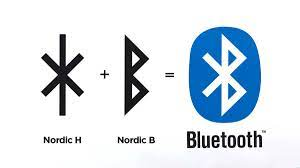What Is the
Internet?
The
internet is a global network of interconnected computers, servers, phones, and
smart appliances that communicate with each other using the transmission
control protocol (TCP) standard to enable a fast exchange of information and
files, along with other types of services.
How was the internet
developed?
The internet was first
envisioned in the form of ARPANET by the Advanced Research Projects Agency
(ARPA) of the U.S. government in 1969. The initial goal was to create a network
that would enable users of a research computer at one institution to
“communicate” with research computers at another institution. Since
communications can be sent or diverted across several directions, ARPANet could
continue to operate even if a military strike or any other calamity damages
portions of the network.
ARPANET used the new packet switching technology to create low-cost, interactive interactions between computers, which generally communicate in short data bursts. Packet switching broke down large transmissions (or portions of computer data) into smaller, more manageable parts (called packets) that could travel independently across any accessible circuit to the destination where they were reassembled. Consequently, unlike conventional voice services, packet switching doesn’t require a separate dedicated connection between a pair of users.
In the 1970s, corporate packet networks were launched, although their primary purpose was to enable efficient access to distant computers through specialized terminals. They replaced expensive long-distance modem connections with “virtual” lines via packet networks.
Today, the internet is
a globally accessible, collaborative, and self-sustaining public resource
available to tens of millions of individuals. Countless people utilize it as
their primary source of data consumption, spurring the development and
expansion of their own community through social networking and content
exchange. However, private versions of the internet do exist, which are
primarily used by large organizations for secure and regulated information
exchange.
Key features of the
internet
- The internet is a vast, interconnected network of computers and other network-enabled devices, which is:
- Globally available: The internet is an international service with universal access. People living in isolated areas of an archipelago or even in the depths of Africa can now access the internet.
- Easy to use: The software used to connect to the internet (web browser) is user-friendly and easy to understand. It’s also relatively easy to create.
- Compatible with other types of media: The internet provides a high level of engagement with photos and videos, among other media.
- Affordable: Internet service development, as well as maintenance costs, are modest.
- Flexible: Internet-based communication is highly adaptable. It supports text, audio, and video communication. These services are available at both individual and organizational levels.
ETHERNET:
A system for connecting a number of computer systems to form a local area network, with protocols to control the passing of information and to avoid simultaneous transmission by two or more systems.
WI-FI:
A facility allowing computers, smart phones, or other devices to connect to the Internet or communicate with one another wirelessly within a particular area.
BLUETOOTH:
A standard for the
short-range wireless interconnection of mobile phones, computers, and other
electronic devices.
MOBILE:
A decorative structure
that is suspended so as to turn freely in the air. WIRED
NETWORK:
A wired network
connects devices to the Internet or other network using cables. The most common
wired networks use cables connected to Ethernet ports on the network router on
one end and to a computer or other device on the cable's opposite end.
WIRELESS NETWORK:
A wireless network is
any type of computer network that uses wireless data connections for connecting
network nodes.







Post a Comment
If you have any doubts, please let me know